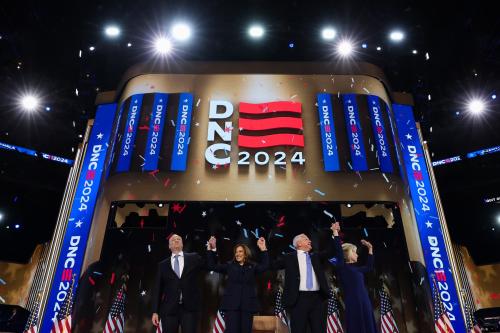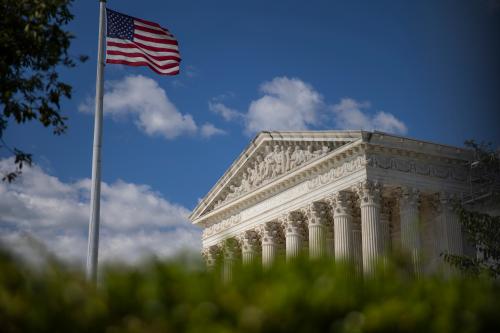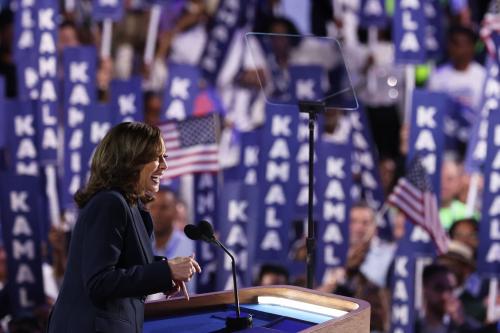Darrell West joins Judy Woodruff and Evan Tracey on the NewsHour with Jim Lehrer to look at the themes and the spending behind the 2008 Presidential Campaign ads.
JUDY WOODRUFF: The paid TV ad contest of the presidential election is heating up in states across the country.
John McCain’s campaign has spent almost $29 million since mid-May, and Barack Obama’s camp spent almost $34 million since June 20th.
For more on the themes and the spending strategy behind those spots, we’re joined by two ad-watchers. Darrell West is vice president and director of governance studies at the Brookings Institution. He’s the author of the book “Air Wars: TV Advertising and Election Campaigns.”
And Evan Tracey, who monitors ads for TNS Media Intelligence, a nonpartisan media research firm that tracks political and public affairs advertising.
Thank you both for being here.
And, Evan Tracey, to you first, you say that you already discern a strategy out there on the part of the McCain camp and the Obama camp?
EVAN TRACEY, TNS Media Intelligence: Yes, Judy, it’s interesting. Both Senators McCain and Obama had very similar strategies in the primaries, where they bet early with a lot of TV dollars in the early states that got them on their eventual rolls to their nomination.
Since then, Senator McCain has spent most of his money in the traditional battleground states, the Iowas, the Ohios, the Pennsylvanias, the Michigans.
Obama is also in those states, but he’s trying to expand the playing field by targeting states like Virginia, North Carolina, Georgia, and states also like Montana, Alaska, and North Dakota, really red states, foundations of the Republican battleground strategy.
So Obama is looking to expand the playing field; McCain is looking to contract it.
Darrell West, The Brookings Institution: We’re seeing a lot of early negativity in this race. This race, when you look at the ads, almost looks like October, because you have nasty ads, misleading campaign appeals, statements being taken out of context, but it’s only August.
The Strategy Behind the Ads
JUDY WOODRUFF: And no way to know whether this is a temporary strategy or not?
EVAN TRACEY: Well, we’ll see after the Republican convention, because that’s really when the battleground becomes no longer a game of smoke and mirrors and it becomes, “This is where we’re going to fight this out between basically Labor Day and Election Day.”
So right now, again, the strategy is really designed for Obama to get this as big a playing field as he can get it, so his money advantage that he’s expected to have, post the conventions, can really go to work.
JUDY WOODRUFF: You’ve also, Darrell West, seen, discerned a strategy, as you describe it, on the part of these two candidates?
DARRELL WEST: I think what impresses me is the early advertising, just the absolute amount of dollars that are being spent now and the diversity of ads that are being run.
I think, when you go back to the 2004 presidential campaign, one might argue that Republicans in part won that election in August when the Swift Boat ads came out and attacked John Kerry.
So we’re seeing a lot of early negativity in this race. This race, when you look at the ads, almost looks like October, because you have nasty ads, misleading campaign appeals, statements being taken out of context, but it’s only August.



Commentary
Examining the Negative 2008 Presidential Campaign Ads
August 7, 2008